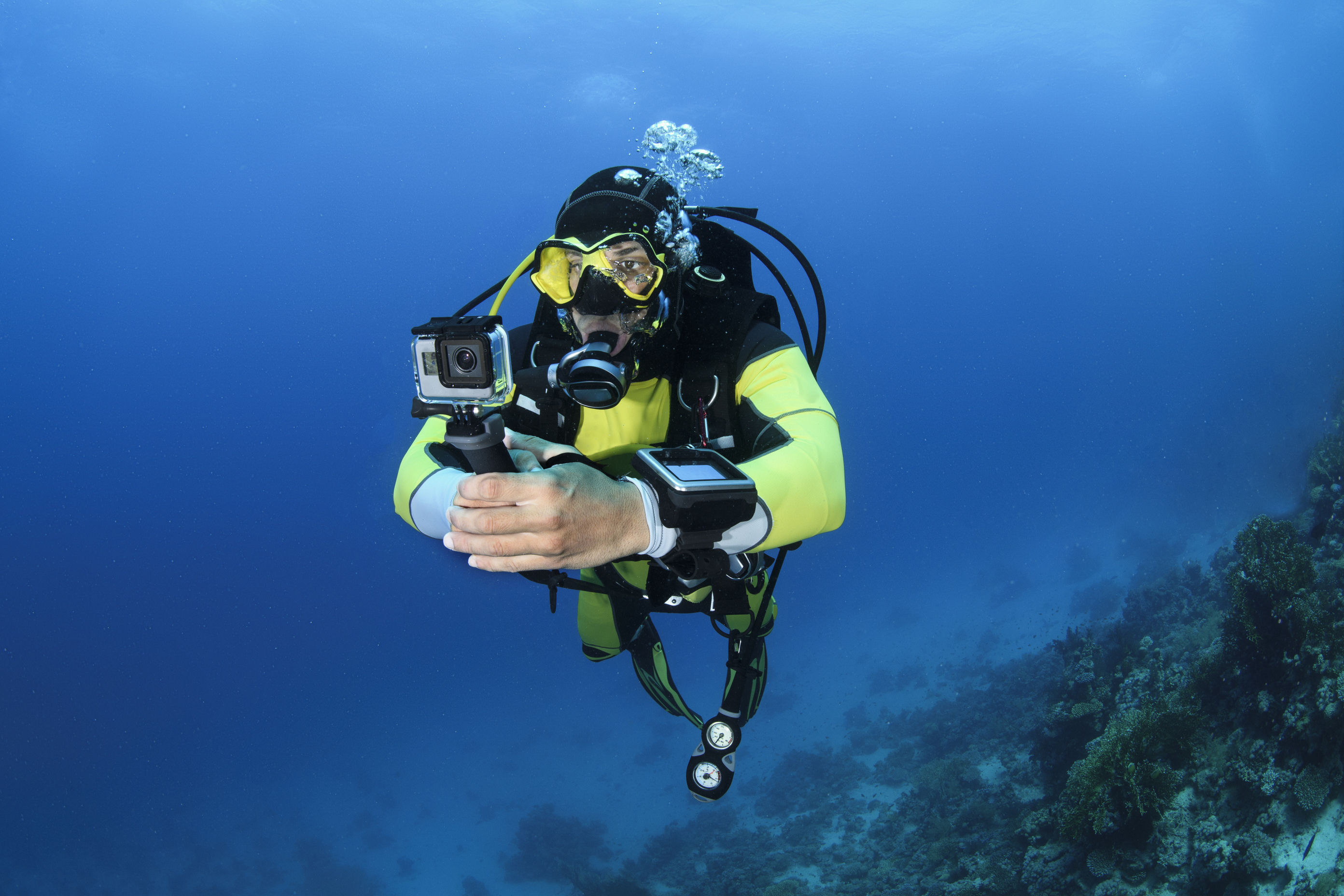GoPro (GPRO +0.78%) just revealed its smallest camera ever, the ice cube-sized Hero 4 Session, which will launch for $399 on July 12th. The device shoots 1440p video at 30 fps, 1080p video at 60 fps, and 720p video at 100 fps. It also takes 8-megapixel still photos.
Unlike its big brothers, the Session does not require an additional waterproof housing before being submerged into ten meters of water. However, it lacks an LCD screen to view pictures and only has two buttons -- one for shooting and triggering a time-lapse photo mode, and another for turning on its Wi-Fi. The Session's companion app and Wi-Fi remote are used to access other functions.

The Hero 4 Session. Source: GoPro
The Hero 4 Session is an aesthetically appealing device, but will its lofty price tag prevent it from competing effectively against lower-priced rivals?
Filling in the gaps
GoPro controls about 70% of the U.S. action camera market, according to NPD. That widespread brand recognition allows it to sell its cameras at premium prices, while cheaper rivals are often called "GoPro knockoffs." Over the past year, GoPro expanded its line of cameras with low-end and mid-range devices to appeal to a wider array of customers:
|
Max Video |
Photos |
LCD |
Price | |
|
Hero |
1080p, 30fps |
5MP |
No |
$130 |
|
Hero+ LCD |
1080p, 60fps |
8MP |
Yes |
$300 |
|
Hero 4 Silver |
4K, 15fps |
12MP |
Yes |
$400 |
|
Hero 4 Black |
4K, 30fps |
12MP |
No |
$500 |
Source: Company website
Compared to these devices, the Hero 4 Session's $400 price tag seems odd. The Hero 4 Silver, which costs the same, has a touch LCD screen and shoots higher quality videos and photos. The Session's only advantage over the Silver is its size. The Wall Street Journal recently compared the Hero 4 Session to an Apple iPod Shuffle, but there is a key difference -- the Shuffle was always marketed as a cheaper alternative to the full-sized iPod.
Is GoPro copying the "knockoffs"?
At first glance, the Hero 4 Session looks like a copy of the Polaroid Cube, a $100 camera which turned heads with its cute form factor and retro design aesthetics. The original Cube could shoot 1080p video at 30fps and take 6-megapixel photos, which seemed to be "good enough" specs for casual users. A new $150 version, known as the Cube+, adds Wi-Fi connectivity and takes 8-megapixel photos.

The new Polaroid Cube+. Source: Polaroid
It is unclear how many Cubes Polaroid sold, but its tiny form factor apparently convinced GoPro to create the Hero 4 Session.
Yet this is not the first time GoPro followed another company's footsteps. Earlier this year, GoPro unveiled a ball-shaped mount which allowed multiple GoPro cameras to film virtual reality content, yet companies like 360Heros had already been selling similar mounts. GoPro also discussed plans to launch consumer drones, but companies like DJI Innovations are already selling drones with GoPro mounts. If GoPro is running out of fresh ideas, it could eventually have trouble widening its defensive moat against hungry competitors.
What does this mean for GoPro investors?
GoPro faces fierce competition in the action cam market, but its growth has not slowed down yet. Last quarter, its top line rose 54% annually as its net income jumped 98%. Revenue from Europe and Asia, which accounted for roughly half of total sales, soared 66%.
To boost revenue further, GoPro is filling out every price tier and niche market. Just as the entry-level Hero was designed to shore up its defenses against $100 action cams, the Hero 4 Session is aimed at a niche market of action cam users who prefer the small size over full features. Investors should note that cheaper GoPro cameras are not necessarily low margin devices -- according to IHS estimates, the $130 entry-level Hero only costs $47 to manufacture. With its higher price tag, the Session could have even beefier margins.
The Session also gives us an early glimpse at the potential of GoPro's upcoming cloud service. CEO Nick Woodman hopes that the cloud service, which remains in the early planning stages, will eventually pull images and videos from cameras directly to the cloud for easy editing and uploads. Once that system is in place, smaller form factor cameras like the Session could replace the bulkier models, since most of their functions can be accessed on the cloud-connected mobile app. Videos could also be seamlessly uploaded to social networks and its own GoPro Channel.
The key takeaway
The GoPro Hero 4 Session is not a particularly innovative device, but it can help GoPro fill in more gaps and offer cameras which appeal to a wider range of consumers. That wider range could also help it reach more customers in higher growth overseas markets. However, the lofty price tag could limit its appeal and prevent it from effectively competing against similarly-sized, no-frills devices like the Polaroid Cube.






